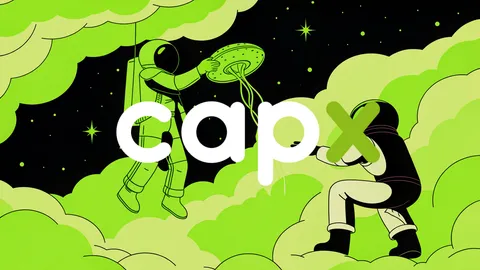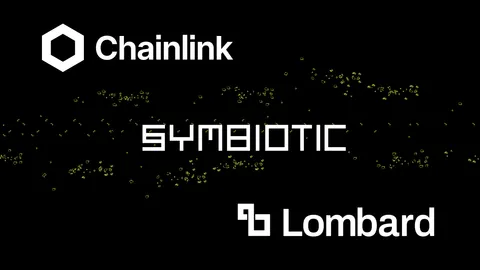Crypto's multichain promise has remained largely unfulfilled. While we've built dozens of powerful blockchain ecosystems, they still remain frustratingly isolated. Users navigate complex bridging processes, worry about cross-chain security assumptions, and accept fragmented experiences as the price of decentralization. Developers face an impossible choice: build on a single chain and sacrifice reach, or attempt multichain deployment with expensive custom infrastructure and centralized compromises.
Today, this changes. Symbiotic Relay, our network middleware SDK, enables any protocol to stake on Ethereum and verify outcomes on any supported chain. For the first time, stake from any ecosystem can verify protocol decisions anywhere, trustlessly and without permission.
This breakthrough unlocks something previously impossible: true cryptoeconomic coordination between entirely different networks, assets, and consensus layers. Utilizing Symbiotic Relay, protocols can now build bridges, settlement layers, oracles, and rollups without relying on multisigs, proof-of-authority setups, or sacrificing decentralization. The era of natively multichain applications secured by shared cryptoeconomics has arrived.
Breaking Down the Walls Between Ecosystems
The fragmentation problem runs deeper than user experience. Until now, building truly multichain decentralized networks using Proof-of-Stake was practically impossible. Large validator sets became prohibitively expensive to verify across chains, and networks with hundreds of operators faced millions in annual verification costs on Ethereum alone. Meanwhile, modern protocols seeking multichain operations were forced into Proof-of-Authority models because staking data simply wasn't available cross-chain.
To date, each blockchain ecosystem has developed unique strengths that remain trapped within their borders. Bitcoin commands unmatched trust and represents $2.2 trillion in market value. Ethereum anchors over $62 billion in DeFi and hosts thousands of programmable assets. Solana delivers 10,000+ transactions per second and serves 100 million active addresses monthly. These networks were designed to be sovereign, but that sovereignty ultimately led to isolation.
Symbiotic Relay changes this dynamic fundamentally. Instead of forcing users to choose between Bitcoin's trust, Ethereum's expressiveness, or Solana's performance, Relay enables builders to tap into all three simultaneously and easily expand to any chain. The result is a unified experience where the full functionality of crypto's most powerful networks becomes accessible through one interface, secured by Symbiotic's shared cryptoeconomic layer.
For users, this means the end of chain anxiety. No longer do you need to track which chain holds your stake or worry about bridge security when moving between protocols. Multichain applications become truly seamless, with cryptoeconomically verifiable outcomes across all interactions. The mental overhead of navigating blockchain silos disappears, replaced by intuitive experiences that work as users expect them to.
How Relay Works Under the Hood
Previous attempts at multichain coordination required expensive custom infrastructure or reliance on centralized relayers, both unacceptable compromises for protocols serious about decentralization. Symbiotic Relay solves this through two fundamental breakthroughs in stake coordination architecture.
First, cheap validator set verification using a combination of BLS and ZK cryptography provides constant verification costs on the EVM, regardless of validator set size. This eliminates the linear cost scaling that made large decentralized validator sets economically impractical.
Second, native multichain settlement enables networks to settle on multiple chains without introducing additional trust assumptions. The key innovation lies in separating stake verification from chain execution. While stake can be accumulated and managed on Ethereum through Symbiotic's robust infrastructure, verification of that stake's decisions can happen on any supported chain through Relay's settlement modules.
Relay's architecture consists of three crucial components: onchain staking modules that handle operator onboarding and voting power using Symbiotic Core, offchain signature aggregation through a sidecar network that delivers validator set data across chains, and onchain settlement contracts deployable on any EVM chain for native verification. This creates a trustless bridge between Ethereum's security layer and any execution environment, without requiring custom development or centralized intermediaries.
When a protocol integrates Symbiotic Relay, it gains access to Symbiotic's entire operator and stake ecosystem. These operators can participate in protocol decisions while their stake remains secured on Ethereum, with outcomes verified across any chain the protocol operates on. The result is plug-in simplicity with cryptoeconomic guarantees, something that was previously impossible.
Unlocking New Primitives for Builders
The implications for protocol development are immediate and far-reaching. Attestation networks can now provide L2 finality confirmations and inter-rollup state verifications across multiple chains natively. Bridge protocols can verify cross-chain messages without requiring stake on each individual chain, eliminating trusted relayers while maintaining instant finality. Oracle networks can extend to new chains without storing staking information everywhere or falling back to Proof-of-Authority models.
Even L1 chains can securely utilize stake from Symbiotic and incorporate this data into their consensus layer, allowing consensus results to be natively verified onchain. This represents more than incremental improvement; it's a fundamental change in how multichain infrastructure can be built.
According to Electric Capital's 2024 Developer Report, 34% of monthly active developers now work across multiple blockchains, up from 10% in 2015. Multichain development has moved from experimental to essential, and Symbiotic Relay provides the infrastructure to support this evolution.
Early teams exploring Relay are already building use cases that were previously impossible or prohibitively complex. Instead of spending months on custom security implementations, they can focus on their core innovations while leveraging battle-tested infrastructure that scales with demand.
The Path Forward
Symbiotic has already secured over $1 billion across 15+ production networks since launching on mainnet. Relay will now extend this foundation to dozens of additional chains and modular systems, positioning Symbiotic as the cryptoeconomic coordination layer for an interconnected blockchain world.
The teams building on Symbiotic Relay today are creating the blueprint for tomorrow's multichain native applications. These aren't adaptations of single-chain protocols or bridges between isolated systems, but entirely new primitives that treat multiple chains as a unified computing environment from the ground up.
This represents the maturation of blockchain infrastructure. Just as cloud computing abstracted away server management to enable web-scale applications, Relay abstracts away chain-specific security concerns to enable truly global decentralized applications. The result is a foundation where innovation can flourish without the constraints of ecosystem boundaries.
Symbiotic Relay is nearing full production release and is available in early access for proof-of-concept development. The multichain future isn't coming, it's already here. With Symbiotic Relay, that future finally has the infrastructure it deserves.
Ready to build? Visit symbiotic.fi for integration requests and early access.



















